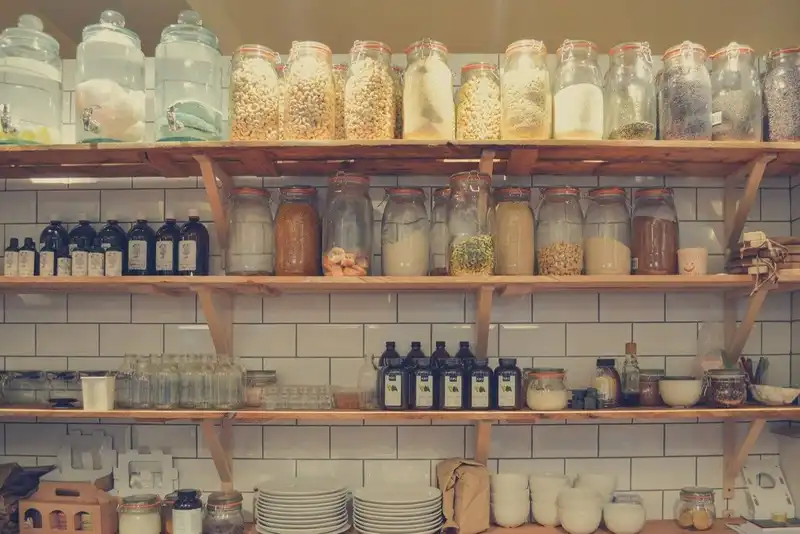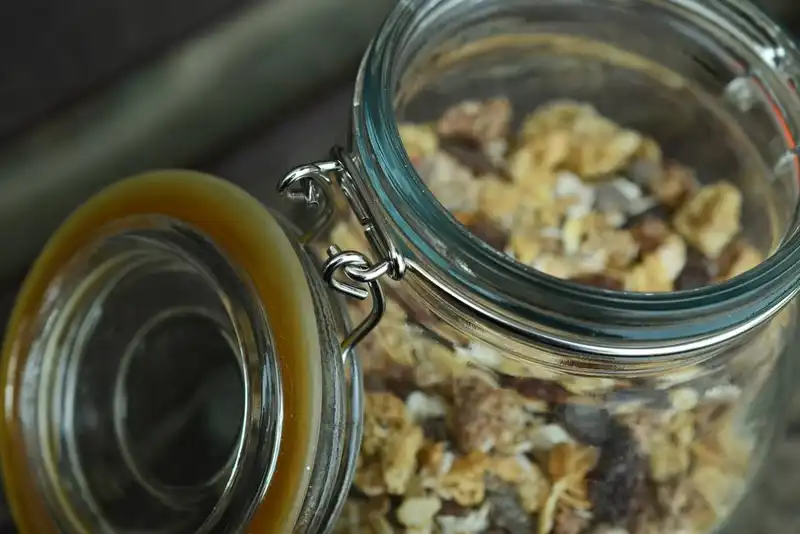A Look at Dry Storage Temperature- Tips and Tricks

What is Dry Storage?
Dry storage includes the protocol and procedures used to keep dry food safe and high quality until it is consumed. Proper dry storage decreases the spread of foodborne illness and increases the shelf life of various dry food products.
Dry storage is often considered a low maintenance storage type. Many people incorrectly assume that if they keep food at room temperature and there are no visible issues with a product that a dry food item is safe. Food storage for dry foods are just as important to consider as any other food storage type.
However, dry storage is much more complex and nuanced. Improperly maintained storage areas can create severe food safety issues that can result in foodborne illness and massive food waste due to the need to dispose of unsafe food.
To avoid unsafe and low quality dry food it is crucial to keep storage areas temperatures correct. Foods stored correctly will have longer shelf lives as well as optimal nutritional benefits and aesthetics. When storing food correctly, you can provide your customers with the safest and best product possible.
A dry storage area should be completely free of sunlight, kept a cool temperature consistently, and have exposure to minimal humidity levels. In fact, humidity levels should not exceed 50-55% in order to keep food safe long term.
The idea temperature range for dry storage is between 50 to 70 degrees Fahrenheit. If this is the typical room temperature in your geographical area, that is great, but there will likely be times throughout the year that you need to make adjustments to your dry storage temperature.
Dry Storage Temperature Tips and Tricks

There are many dry storage tips for food industry professionals to consider and implement. These tips cover a wide variety of topics, ranging from food temperature to food rotation techniques. Some great tips and tricks to consider include-
1. Rotation- The first in, first out system keeps your dry storage area organized and increases food safety significantly. Clearly date and label all dry food products and place items that need to be used first at the front of your dry storage area.
Keeping food that needs to be used first towards the front will make it easy for your staff to grab dry food products as needed. It is also helpful to create a visible log of use by and sell by dates in your storage area so that food can be used before it spoils.
2. Temperature- A temperature increase of just 18 degrees Fahrenheit can cut down the shelf life of a product in half. To avoid this, always keep food in your dry storage area below 70 degrees Fahrenheit.
Make sure that the temperature of your storage area is not negatively affected by heat producing equipment. Heat producing equipment can range from water heaters to non insulated steam or water pipes.
Proper ventilation can also help keep your storage area temperature at an appropriate level. Remember, some level of air exchange is absolutely necessary for dry storage areas.
3. Sunlight- Dry food should never be stored in direct sunlight. Sunlight degrades both the nutritional value and quality of food. This is especially the case for dry food items that are high in fat soluble vitamins.
Windows and skylights should be adequately covered to decrease the amount of sunlight entering storage areas. However, it is still crucial for staff safety that your storage area is well-lit. Make sure to install great lighting fixtures to keep your staff safe and efficient as possible.
4. Safety- There are many food safety issues to consider when storing dry food ranging from food spoilage that can result in foodborne illness to pest control. To avoid pests getting into your dry storage make sure to seal and pest-proof all entry points they could potentially breach.
Dry foods should never be stored on the floor and should always be placed at least six inches from the ground. To further safeguard the temperature of food, keep food 18 inches away from outer walls.
To avoid chemical contamination it is best to avoid keeping any cleaning products in the dry storage area. If you must do so, keep food physically separated from all non-food items.
5. Humidity- Ideal humidity levels are 15% or less but should never exceed 50-55%. Two methods to decrease humidity include using dehumidifiers and moisture proof packaging. Utilizing both items simultaneously is the most effective way to keep dry food at a low humidity level.
Thankfully, the large majority of products are already packaged to keep humidity levels low. Keeping food in its original packaging whenever possible is strongly advised.
If the original packaging is deficient, it is best to keep food in airtight containers until it is used. Remember, the less oxygen that food is exposed to the longer it maintains its shelf life.